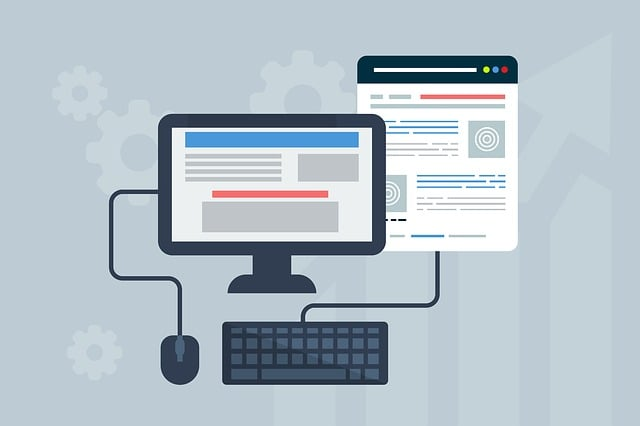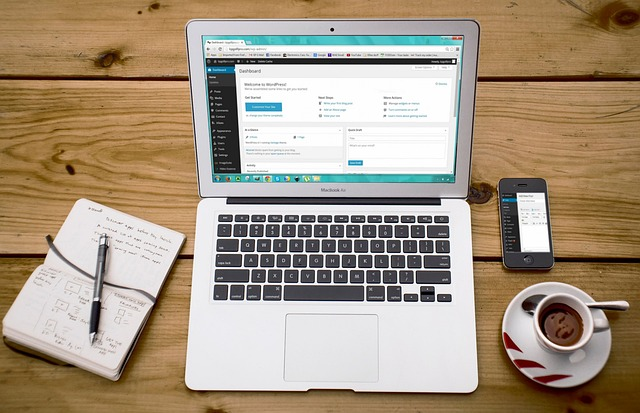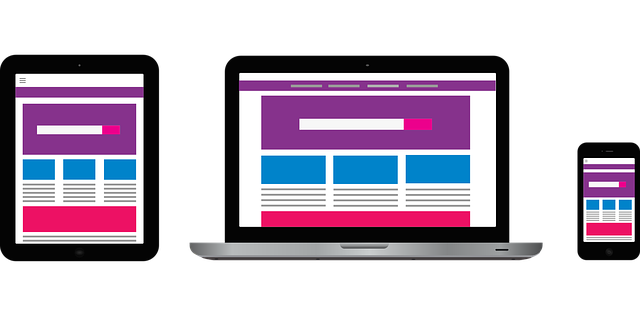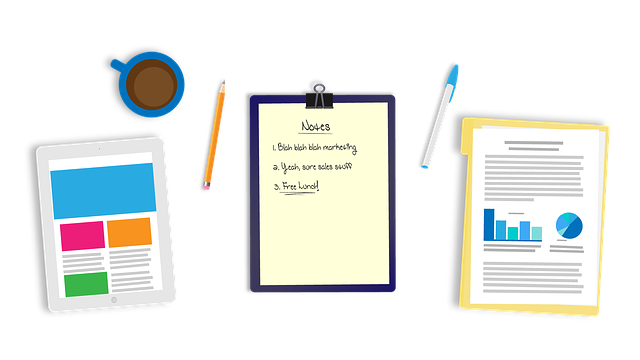We’ll increase conversions by
20-100+%
on your website.
Get a FREE Audit today
See how we can help your business increase conversion rates
Introduction
In today’s fast-paced digital world, ensuring your website is optimized to drive conversions is more important than ever. A key component of conversion rate optimization is A/B testing, a powerful method of comparing two versions of a webpage or app to determine which one performs better.
By learning how to effectively develop and execute an AB test and hypothesis testing tool, you can gauge user response and make data-driven decisions that will propel your business forward.
Understanding Website Conversion Testing And Its Importance
Website conversion testing is an essential aspect of any digital marketing strategy, as it allows businesses to understand how well their website or application performs in terms of user engagement and achieving desired outcomes.
With the online marketplace becoming increasingly competitive, having a well-optimized website can make a significant difference in attracting and converting potential customers into loyal clients.
By employing various methods such as A/B testing or split testing, businesses can experiment with different variations of web pages, landing pages, or app features to determine which version yields higher conversion rates.
These tests help identify design elements or functionality that resonate better with users by analyzing metrics like click-through rate (CTR), bounce rate, time on page/site or completed transactions.
For example, a simple change in button color may influence more visitors to make a purchase from your eCommerce store.
Understanding and utilizing website conversion testing services is vital for data-driven decision-making processes in optimizing website performance over time – all geared towards continuous improvement that increases revenue generation opportunities for your business.
Defining AB Test Hypotheses
In this section, we’ll dive into the purpose and definition of AB test hypotheses, as well as the types of hypotheses you can create to improve your website’s conversion rates.
Whether you’re new to A/B testing or a seasoned pro, understanding how to from data science craft effective hypotheses is essential for running successful tests.

Purpose And Definition
A/B testing, or split testing, serves as an essential strategy for website owners and marketers striving to optimize their online presence. Its primary purpose is to evaluate two distinct versions of a web page or app element in order to determine which one performs better with users.
To effectively conduct A/B testing, you must first define the specific aspects of your site or app you want to test. This entails establishing clear objectives such as increasing conversion rates, decreasing bounce rates, improving click-through rates (CTRs), boosting engagement – essentially any metric tied to business goals.
For example, suppose you are looking to boost newsletter sign-ups on an existing site or your travel blog. In this instance, creating two different forms with varying designs or messages can be tested against each other in order to gauge which version resonates more with visitors and ultimately leads them down the path towards subscribing successfully.
Types Of Hypotheses
In the realm of A/B testing, there are two main types of hypotheses that drive the testing process: null hypothesis and alternative hypothesis. The hypothesis testing consists first null hypothesis or alternative hypothesis refers to represents the existing assumption or status quo, which states that there is no difference between the conversion rates of the control version (A) and variation treatment group (B).
For example, suppose an e-commerce website wants to test statistical hypothesis testing see if changing their call-to-action button color would impact conversions. The null hypothesis could be “There is no difference in conversion rate when using a red call-to-action button compared to a green one.” Meanwhile, an alternative hypothesis might state “The green call-to-action button will have a higher conversion rate than our current red one.” Adopting these two types of hypotheses allows marketers and data analysts to systematically evaluate their beliefs about customer behavior while continually refining their understanding through the usual process of statistical hypothesis testing.
How A/B Testing Works
A/B testing is a simple and effective way to compare two versions of a website or app. First, you create two versions of the same web page or application, known as the control and variation.
Both are shown to customers randomly over time.
By comparing results from both groups statistically using tools like hypothesis testings that calculate p-values to determine whether there were significant differences between random sample and the two groups’ behavior concerning your performance metric(s).
You can then use this data-driven approach to identify which variant performed better and implement those changes on your live site/application.

Creating Effective AB Test Hypotheses
Learn how to craft clear and effective hypotheses by establishing questions or problems, an alternative hypothesis, collecting data, creating alternative hypothesis or statements, and determining success metrics. Examples of successful A/B testing will be discussed as well own best practices.
Establishing Clear Questions Or Problems
To create effective A/B test hypotheses, it’s essential to have good hypotheses that establish clear questions or problems that you want to solve with two hypotheses. A good hypothesis statement should be specific, measurable, and actionable.
For example, if your website has a high bounce rate on two pages below the homepage, you might ask whether changing the layout will reduce the bounce rate. Then, you can craft an effective hypothesis by stating what changes you plan to make and how they will impact engagement metrics such as time on page or click-through rates.
It’s also important to determine success metrics upfront so that you can measure whether your changes have made a positive impact.
Crafting Hypothesis Statements
Crafting effective hypothesis test statements is a vital step in A/B testing. These statements should be clear, concise, and based on quantitative data analysis. The goal of an A/B test is to determine which variation performs better, so the first hypothesis test statement should clearly define what success looks like.
For example, “By changing the color of our call-to-action button from blue to green, we expect a 15% increase in click-through rates.” This statement establishes a clear question or problem (click-through rates) and proposes a specific outcome (a 15% increase).
It’s important to note that successful hypothesis statements go beyond simply stating the hypothesis of what change will be made – they also consider the reasoning behind it. In other words, given hypothesis is, why do you believe that this change will result in improved performance? Effective hypothesis statements use data insights to support their hypothesis claims and provide justification for testing decisions.

Determining Success Metrics
When it comes to A/B testing, determining success metrics is crucial. Success metrics are the specific measurements used to test statistics to determine if your test has been successful or not.
These measurements could include anything from click-through rates and bounce rates to conversion rates and revenue per visitor.
For example, if you’re running an e-commerce website, your primary goal might be to increase sales. In this case, a potential KPI would be measuring how many visitors add items to their cart and complete checkout on each version of your webpage.
To get the most out of your A/B testing efforts, think beyond just improving one metric at a time. Instead consider how these adjustments impact other parts of your marketing funnel as well – for instance changes in customer behavior such as returning customers or referral traffic may work better instead of only focusing on homepage conversions alone.
Examples Of Successful A/B Testing
One of the most successful A/B tests was conducted by Obama’s 2008 presidential campaign. They added a new call-to-action button that said, “I will be voting for Barack Obama.” This simple change resulted in a whopping increase of over $60 million in donations.
Another example is from Moz, an SEO tool company, who tried different headlines for their landing page and ended up increasing conversions by 52%. And when Airbnb changed the background color on their website from white to blue, they saw a dramatic increase in bookings – as much as 15% on some pages.
Tips For Effective AB Testing
To conduct effective A/B testing, it is essential to use data to inform the testing process, test one element or null hypothesis at a time, keep the testing focused by establishing clear objectives, consider sample size when determining success metrics and taking into account statistical significance.

Using Data To Inform Testing
One of the most important aspects of A/B testing is using data to inform your testing decisions. Without data, you are simply making assumptions about what might work without any evidence to support your hypotheses.
Data can come from a variety of sources, including Google Analytics or other web analytics tools, surveys, user feedback, and heat maps. This information can be used to identify problematic areas on your website or app that need improvement and provide insights into user behavior.
When creating hypotheses for A/B testing, it’s important to incorporate relevant data into the hypothesis tests for those statements.
Testing One Element At A Time
When conducting A/B testing, it’s important to test one element at a time. This means changing only one aspect of the webpage or app and keeping all other elements consistent in both versions.
For example, if you’re testing the color of a call-to-action button on your website, keep everything else on the page static and test only different shades of that button.
Testing one element at a time also allows for greater precision when analyzing results and making data-driven decisions based on insights gained from A/B testing.
Keeping Testing Focused
When conducting A/B testing, it is important to keep the focus on a specific goal or problem that needs to be addressed. Too often, businesses get carried away with multiple variations and testing several elements at once, which can lead to confusing results and make it difficult to determine what really caused an improvement or decline in conversion rates.
To avoid this, start by identifying one key element that may have the most significant impact on user behavior and craft hypotheses around that element. This could be anything from headline copy to button color, but it should be something actionable that can be easily changed based on the results of the test.
One example of focused A/B testing comes from a company called Formstack. The company noticed that its sign-up form had high abandonment rates and decided to test two different versions of a single field: name versus full name.
After analyzing customer data over many months, they found out that using just first names increased sign-ups by 10%.

Setting Clear Objectives
Setting clear objectives is crucial in A/B testing to ensure that you’re optimizing your website for the right outcomes. Before proceeding with any tests, it’s important to establish what metrics you want to improve and by how much.
Having clear objectives helps keep your testing focused and enables you to measure success accurately. Once your objectives are defined, make sure they align with your overall business goals and can be easily tracked using appropriate tools such as Google Analytics.
Considering Sample Size
It’s important to consider sample size when carrying out A/B testing. This refers to the number of users who are included in statistical analysis of your test group and control group. If you have too small a sample size, above example then your results may not be statistically significant or representative of the wider population.
To determine an appropriate sample size for your A/B test, consider factors such two variables such as the level of variation within your target audience and the sensitivity of your data mining any outcome metrics you’re measuring.
Ultimately, it’s about finding the right balance between statistical significance and practicality given resource constraints for efficient A/B testing that can yield positive changes in conversion rates.
Common Mistakes To Avoid In AB Testing
To avoid common mistakes in AB testing, it is important to adequately plan and test for long enough, focus on the right metrics, and ensure that sample size is considered.

Lack Of Adequate Planning
One of the most common mistakes that can negatively affect A/B testing results is a lack of adequate planning. Rushing into A/B testing without careful consideration and planning for extreme results can lead to inaccurate or inconclusive results, wasting valuable time and resources.
The first step in effective A/B testing is establishing clear goals and objectives for what you want to achieve with your test. Without a specific objective in mind, it’s difficult to know what elements you should be testing or how you will measure success.
It’s also important to have a well-defined hypothesis statement, which includes the proposed change, the expected outcome, and the metrics used to measure success.
For example, let’s say an e-commerce website wants to increase their checkout page conversion rate by optimizing their page layout through A/B testing but lacks adequate planning at this stage; they might jump straight into creating variations based on random ideas rather than hypothesis testing-driven changes or with no clear performance indicators established beforehand leading them nowhere despite collecting tons of data during tests.
In conclusion, taking sufficient time for upfront planning ensures that your A/B tests are designed correctly from start-to-finish yielding meaningful outcomes while avoiding wasted efforts as much as possible.
Not Testing For Long Enough
One common mistake in A/B testing is not testing for long enough. Random events can often impact the results of a short test, leading to misleading conclusions. Running tests for at least two weeks or until you reach statistical or significance level is recommended to ensure that your results are accurate and reliable.
For instance, a company trying to optimize its e-commerce checkout process may run an A/B test with their original page and a variation featuring new payment options. However, if they only ran the test over one weekend (which happened to be during Black Friday), data from it might be skewed due to abnormal customer behavior occurring on that day.
Focusing On The Wrong Metrics
One of the most common mistakes made in A/B testing is focusing on the wrong metrics. While it’s important to keep an eye on conversion rates, other metrics such as bounce rate, average time spent on page, and click-through rate may provide a better understanding of user behavior.
For example, if your goal is to increase sales for an e-commerce website, you might focus solely on product page conversion rates. However, if users are bouncing off your homepage before even reaching the product pages, addressing this issue could lead to a much larger impact on overall conversions.

Analyzing AB Test Results And Making Data-Driven Decisions
When analyzing AB test results, it’s important to understand statistical significance and identify key metrics such as conversion rate, click-through rate, bounce rate, and revenue per visitor in order to make data-driven decisions on which variations to implement.
Statistical Significance
Statistical significance is a crucial factor in A/B testing and data science. It refers to the likelihood that the observed differences between two versions of a webpage or app are not due to chance but rather an actual change in user behavior.
To assess statistical significance, A/B testing tools use p-values – a measure of how likely it is that the results obtained from statistical analysis were due to pure chance.
For example, let’s say we run an A/B test where we changed the color of our call-to-action button from blue to green on one version of our landing page.
Key Metrics To Track
To track the success of A/B testing, there are several important metrics to consider. One key metric is the conversion rate, which measures the percentage of visitors who take a desired action on your website.
By tracking these metrics before and after A/B testing, you can determine whether or not changes made had a significant impact on user behavior. Additionally, it is crucial to account for statistical significance when analyzing A/B test results.
For example, if an e-commerce store wants to increase sales by optimizing their checkout page using A/B testing methods, key metrics such as conversion rate and revenue per visitor would be crucial to track in order to evaluate potential improvements in performance.

Identifying Winning Variations
Analyzing AB test results is a crucial step in the A/B testing process. One of the main objectives of A/B testing is to identify winning variations that improve website performance and increase conversion rates.
To determine which variation or test statistic performed better, you need to look at statistical significance, key metrics, statistical power and data-driven insights. Statistical significance helps you understand whether chance variation in your own test statistic results are meaningful or just random chance.
For example, if you’re testing two different headlines for your landing page and Variation B resulted in a 20% increase in conversions compared to Variation A with a 95% confidence interval of level or higher (statistical significance), then Variation B is considered the winner.
Interpreting Results And Drawing Conclusions
Once an A/B test of two samples is completed, it’s time test statistic us to analyze the results and draw conclusions. Statistical significance plays a crucial role in determining which variable or variation performs better.
The higher the p value of the statistical significance, the more confident we are of strong hypothesis that our results are not due to random chance but a real effect.
Once we’ve identified winning variations with statistically significant results, it’s time to interpret and draw conclusions based on the data collected through statistical testing. For example, suppose Variation B has performed significantly better than Variation A in an A/B test comparing the two variants in product descriptions for possible inclusion on a company website.
In that case, we can conclude that customers prefer device type of language used in Variation B compared to what was previously available (Variation A).
By taking into account various statistical methods of analysis and interpreting data-driven insights from AB testing results companies can make informed decisions about website optimization strategies and how best to focus resources towards improving conversion rates or customer engagement levels.
Implementing Changes Based On Insights
After conducting an A/B test and analyzing the results, it’s time to implement the changes that were identified as being successful. This involves making data-driven decisions based on statistical significance and key metrics.
For example, if a website was testing two different headlines on their homepage, and one of them performed significantly better in terms of click-through rates, then it would be recommended to implement that change site-wide.
However, it’s important not to jump to conclusions too quickly or assume that these changes will always lead to success.

A/B Testing Services For Website Optimization
One great example of A/B testing services for website optimization is GuessTheTest, which provides a comprehensive range of tools and resources to help businesses improve their conversion rates through data-driven insights.
Overview Of GuessTheTest Services
GuessTheTest is a popular A/B testing service that provides users a comprehensive suite of tools to help businesses optimize their website conversion rates more traffic. The platform allows users to create, manage and analyze multiple tests simultaneously, providing real-time updates on performance metrics.
One of the main advantages of GuessTheTest is its easy-to-use interface that allows even novices to set up tests quickly without technical expertise. Additionally, the platform offers advanced features such as segmentation analysis that lets you compare different user segments’ behavior patterns.
This makes it easier for businesses to make data-driven decisions based on insights derived from A/B testing results.
GuessTheTest empowers businesses with valuable insights into which design elements work best for your audience in boosting conversions and driving business goals like increased revenue or enquiries about products & services.
Using A/B Testing Services
Businesses can benefit greatly by utilizing A/B testing services to optimize their website’s performance. These services provide a wide range of tools and techniques to help businesses create effective hypotheses, perform accurate tests, analyze results, and implement changes based on insights.
One advantage of using A/B testing services is that they offer advanced, statistical methods of analysis and machine learning techniques that make it easier for businesses to interpret data and draw meaningful conclusions.
For example, GuessTheTest provides comprehensive testing solutions that enable businesses to test different variations of web pages and marketing campaigns quickly.

FAQs About A/B Testing
In the FAQs section, we answer common questions about A/B testing, including what it is, why you should consider it, different types of tests and how to perform one.
What Is A/B Testing?
A/B testing (also known as split testing) is a method of comparing two versions of a webpage or app to determine which one performs better. This process involves randomly dividing users into two groups: one group sees the control version, while the other sees a variation with changes made to it.
A/B testing allows businesses to gauge user response and improve their conversion funnel and marketing campaign. By analyzing data collected from each group, companies can identify areas for improvement and make data-driven decisions to increase conversion rates.
Why Should You Consider A/B Testing?
If you’re looking to improve your website’s performance, increase conversion rates and boost revenue, A/B testing is an essential tool to consider. By testing two different versions of a webpage or app with small changes in design or copywriting elements, you can identify which version delivers better results for your business goals.
A/B testing also enables you to optimize every element of the customer journey from landing pages to checkout processes, email campaigns and product descriptions. It provides insights into how users interact with your site across different devices and demographic segments.
Overall, A/B testing is a highly effective way to reduce risk when implementing website changes while providing measurable results that help drive business growth.
What Are The Different Types Of A/B Tests?
A/B testing has several types, each with a particular purpose. The most common type of A/B test is the A/B/n test, where more than two versions are tested against the control version to see which ones significantly improve conversion rates.
Multivariate testing is another type of A/B test that compares multiple elements on a page or app simultaneously to identify the optimal combination that generates maximum conversions.
Regardless of what type you use when performing an A/B test, always remember that it should be based on your clear objectives and data-driven insights. For instance, if you want to determine whether adding customer reviews can increase CTRs or not, then a split URL or multivariate test may work best for you.
How To Perform An A/B Test?
Performing an A/B test involves several steps. The first step is to identify the problem or question that needs to be addressed on your website. Then, create a variation of the page element you want to test against the existing version (control).
Next, randomly divide your audience into two groups: one group sees the control while the other sees the variation. Collect data through analytics tools and compare conversion rates between these two versions.
To perform an A/B test effectively, it is essential to set clear objectives and success metrics in advance. For example, you may want to increase click-through rates or reduce bounce rates.
Test only one variable/element at a time since testing multiple elements in one bucket testing two variables or one form could make it difficult to attribute changes in conversion rate accurately.
Conclusion
In conclusion, A/B testing is a powerful tool that businesses can use to improve their conversion rates and boost revenue. By crafting effective hypotheses and analyzing the results, you can identify which changes are likely to drive the most significant impact on your website or app’s performance.
GuessTheTest provides reliable A/B testing services that enable businesses to make data-driven decisions in their marketing campaigns. With the right approach and tools, anyone can benefit from this practical guide to optimize websites for better conversions.










